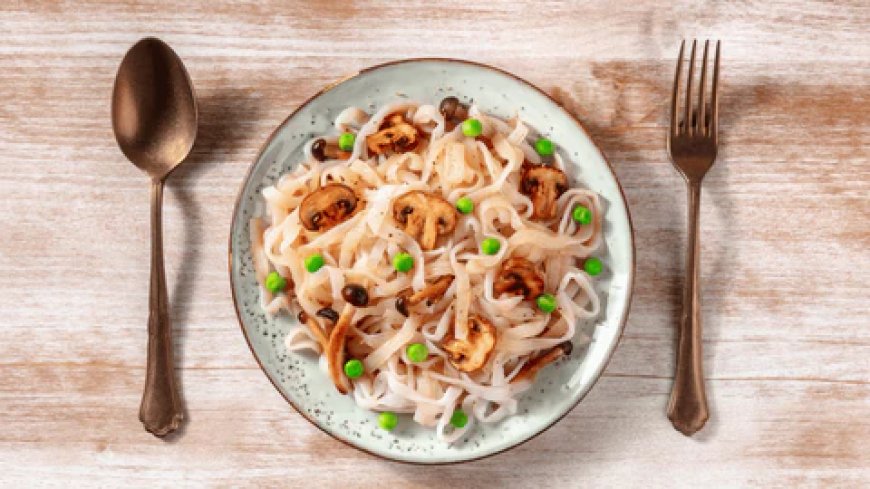Tips for Storing and Using Leftover Konjac Noodles
Learn the best ways to store and reuse leftover konjac noodles to maintain their texture and flavor. Discover expert tips on refrigeration, reheating, and meal ideas to enjoy konjac noodles without waste.

Konjac noodles have become a popular choice for those following low-carb, keto, and calorie-conscious diets. These translucent, gelatinous noodles are made from the konjac plant, which is high in fiber and virtually calorie-free. However, if you’ve cooked more konjac noodles than you can eat in one sitting, you might wonder how to store them properly and use them later without compromising texture or taste.
In this guide, we’ll cover the best storage methods for leftover konjac noodles and creative ways to reuse them in delicious meals.
Why Proper Storage Matters for Konjac Noodles
Unlike traditional wheat-based pasta, konjac noodles don’t absorb water and don’t become mushy when stored. However, improper storage can lead to an unpleasant rubbery texture or cause them to dry out.
To maintain the best taste and texture, follow these essential storage tips.
How to Store Leftover Konjac Noodles
1. Refrigerating Cooked Konjac Noodles
If you have leftover cooked konjac noodles, refrigeration is the best option for short-term storage.
✅ Steps to store in the fridge:
-
Drain any excess liquid from the noodles.
-
Place them in an airtight container.
-
Cover with fresh water to prevent them from drying out.
-
Store in the refrigerator for up to 3 days.
-
Before using, rinse under cold water to refresh their texture.
???? Pro Tip: Avoid storing them with sauces or seasonings, as this can affect their consistency.
2. Freezing Konjac Noodles – Is It a Good Idea?
Unlike regular pasta, konjac noodles don’t freeze well. Freezing can cause them to become chewy and unpleasantly firm when thawed. However, if you need to store them for longer periods, here’s how to do it:
✅ Steps to freeze konjac noodles:
-
Drain the noodles thoroughly.
-
Place them in an airtight freezer bag or vacuum-sealed pouch.
-
Avoid adding water, as ice crystals can change their texture.
-
Store for up to 1 month (though it’s not recommended).
???? How to thaw: Let them defrost in the fridge overnight and rinse before reheating.
3. Storing Unopened Konjac Noodles
Unopened packages of konjac noodles can be stored at room temperature in a cool, dry place. The konjac noodles are packed in water, which helps preserve their freshness.
✅ Storage tips for unopened packs:
-
Keep them in a pantry or cupboard.
-
Avoid direct sunlight or high temperatures.
-
Check the expiration date before use.
???? Do Not Refrigerate Unopened Konjac Noodles! Cold temperatures may alter their texture.
How to Use Leftover Konjac Noodles
1. Reheating Leftover Konjac Noodles
Konjac noodles don’t need extensive reheating, as they don’t absorb heat like regular pasta. Here’s how to warm them up properly:
✅ Best reheating methods:
-
Stir-fry method: Toss the noodles in a dry pan over medium heat for 2-3 minutes.
-
Microwave method: Heat them in 30-second intervals until warm.
-
Boiling method: Briefly blanch in boiling water for 1 minute.
???? Avoid overcooking, as it can make them rubbery.
2. Transforming Leftovers into New Dishes
If you have plain leftover konjac noodles, get creative and use them in new dishes!
???? Konjac Noodle Stir-Fry
-
Toss the noodles with sautéed vegetables, soy sauce, and protein (chicken, tofu, or shrimp).
???? Konjac Cold Noodle Salad
-
Mix with cucumbers, carrots, sesame oil, and a light dressing for a refreshing dish.
???? Konjac Noodle Soup
-
Add noodles to broth with mushrooms, green onions, and a boiled egg for a quick ramen alternative.
Common Mistakes to Avoid When Storing Konjac Noodles
???? Mistake 1: Leaving them in the fridge without water
➡️ Always store cooked konjac noodles in water to maintain their texture.
???? Mistake 2: Freezing them for too long
➡️ If frozen for too long, konjac noodles become hard and rubbery.
???? Mistake 3: Reheating for too long
➡️ Only heat them briefly to avoid a rubbery texture.
???? Mistake 4: Storing in sauces
➡️ Keep sauces separate to prevent flavor absorption issues.
Final Thoughts
Konjac noodles are a great addition to a healthy diet, but proper storage is essential to maintain their texture and taste. Whether you store them in the fridge, attempt freezing, or find new ways to reuse leftovers, following these tips will help you get the most out of your konjac meals.
What's Your Reaction?























